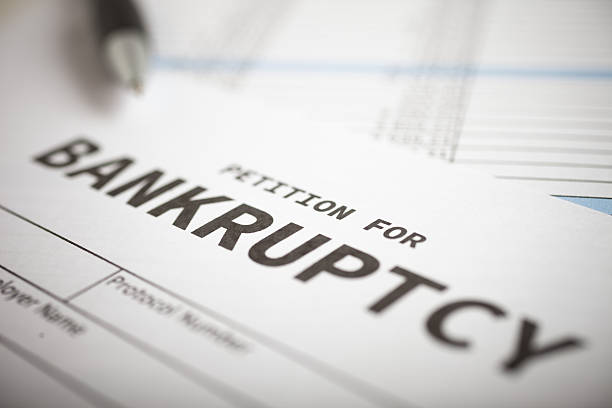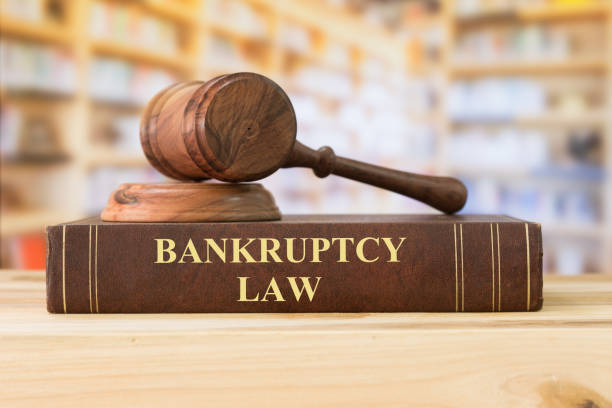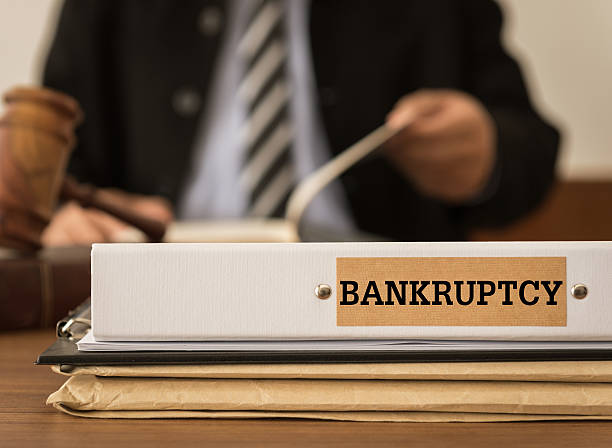Corporate Bankruptcy: Common Reasons Why Companies go Bankrupt

When a company’s obligations exceed its assets and the owners are unable to find a way out, the company files for bankruptcy. Every day, a large number of enterprises fail. There are a variety of reasons why firms fail. The majority of them come down due to failure to follow basic business concepts such as liquidity, compliance, solvency, and viability.
Here’s a quick rundown of each phrase and why it’s vital in protecting a company from going out of business or declaring bankruptcy.
Liquidity
Liquidity is the most short-term of these metrics since it refers to a company’s capacity to convert assets into cash without incurring a loss. Consider the following scenario: you require cash to pay your debts. Selling an asset is the simplest way to obtain it. Any other asset, on the other hand, will not be worth 100 per cent if you try to sell it.
Well, you can collect on some receivables, as you glance around. However, you either can’t collect enough or sell the receivables to a factor at a substantial discount. So, you go to the office supply store and try to return several unopened boxes of supplies. You might also return some unnecessary items to your supplier. You understand that attempting to sell equipment would result in a loss due to depreciation.
If you’re liquid, you have enough cash on hand to pay your debts or pay your staff right away. Most businesses don’t have a lot of excess cash on hand. They should be willing to understand that they will have enough money coming in from income or sales to pay their debts on time. This is referred to as a positive cash flow, and it indicates liquidity.
Read: 6 Profitable Online Business Models
Solvency
Solvency is defined as a company’s capacity to maintain a current ratio of 2:1. This will help them handle emergencies and pay debts in the short term (under a year). The principle of solvency is similar to that of liquidity; however, it is a bit more general. A company that is solvent has sufficient assets to meet its liabilities. If all of the company’s creditors called in their loans and demanded payment (like a bank run). The company would have to liquidate or dispose of present assets at a loss.
The “current ratio” compares total assets (receivables, suppliers, and inventories) to current assets. The ratio will assist in determining a company’s solvency (those debts you owe that are due within the next year, like your taxes, payroll taxes, and monthly payments on your business loan).

Viability
The notion of viability is frequently addressed concerning living organisms (for example, newborn babies) and their capacity to not only survive but also flourish. Economic viability refers to a company’s capacity to generate consistent earnings over time. It doesn’t imply the firm is successful every quarter, but it is lucrative over time, which offers cash for crises and solvency for present demands.
What are the Common Reasons Why Companies go Bankrupt?
Various circumstances might lead to a company’s bankruptcy. Financial mismanagement can lead to bankruptcy, but it can also be caused by situations beyond the owner’s control.
1. Having Trouble Obtaining Funding
According to bankruptcy expert Charles Huber, one of the most significant issues small businesses encounter is obtaining operating cash. To help fund their operations, many business owners take out loans. If a company struggles, its lender may refuse to provide more cash, perhaps leading to bankruptcy.
Even if an entrepreneur can obtain more finance to keep his firm viable in the near term, heavy debt makes it more difficult for a company to remain successful since interest must be paid on the loan.
2. Making Bad Decisions
Quick judgments and company failure might result from a lack of planning and level-headed thinking. For example, a company owner could invest time and money in producing a product she believes in without first polling customers or analyzing manufacturing costs to see if the idea is viable.
Even though the product is beneficial, it may not be financially sustainable in the long run. Lack of financial and management knowledge and experience might make poor judgments more likely, but no organization is immune to making mistakes.
3. Market mishaps
Many business owners fail to plan for their company’s marketing needs in terms of finance, prospect reach, and precise conversion-ratio estimates. It can be not easy to get funding or shift cash from other corporate units to cover the difference. Mostly, when organizations misjudge the entire cost of early marketing initiatives.
Read: 6 Walmart Strategies That Can Boost Your Sales
4. Ineffective planning
Before opening their doors, new companies underestimate the necessity of comprehensive business planning. At the very least, a good business strategy should include:
- A detailed description of the company
- Employee and management requirements now and in the future
- Within the larger market, there are both opportunities and risks.
- Capital requirements, including cash flow projections and multiple budgets
- Initiatives in marketing
- Analyze your competitors
Businesses that fail to meet their demands through a well-thought-out strategy before operations begin are setting themselves up for major problems. Similarly, a company that does not examine its initial business plan frequently or one that is not prepared to adjust to market or industry developments.
Marketing is such an important component of any early-stage firm. Therefore, organizations must ensure that they have set reasonable marketing budgets for present and future demands.
Similarly, establishing accurate forecasts for intended audience reach and customer conversion ratios is crucial to the success of a marketing campaign. Businesses that do not grasp these characteristics of great marketing strategies are more likely to fail than those that take the time to develop and conduct cost-efficient, successful campaigns.

Entrepreneurs should have a thorough grasp of their industry and competitors before establishing a firm. This will assist them to avoid the dangers associated with business plans. Long before items or services are given to clients, a company’s unique business strategy and infrastructure should be defined, and possible income streams should be reasonably forecasted far in advance. Creating and maintaining a business plan is critical to running a long-term profitable firm.
Must Read: Personalized Marketing: How to Connect with Customers?
Conclusion
When you are a business owner you have just three alternatives when facing financial difficulties whether owing to bad business strategy or the general economy. The first alternative is to look for new sources of funding; the second is to default on debts, and the third is to declare bankruptcy. Though the third alternative is seen to be the simplest way to get out of a bad financial situation. Since it tarnishes the business owner’s reputation.
In light of these considerations, company bankruptcy is often not seen as a prudent decision. In this circumstance, consulting a bankruptcy law company is crucial since they can assist you in analyzing your financial condition and providing you with choices.
Related Articles you Might Interested in:
Top 10 Reasons to Outsource Business Services




